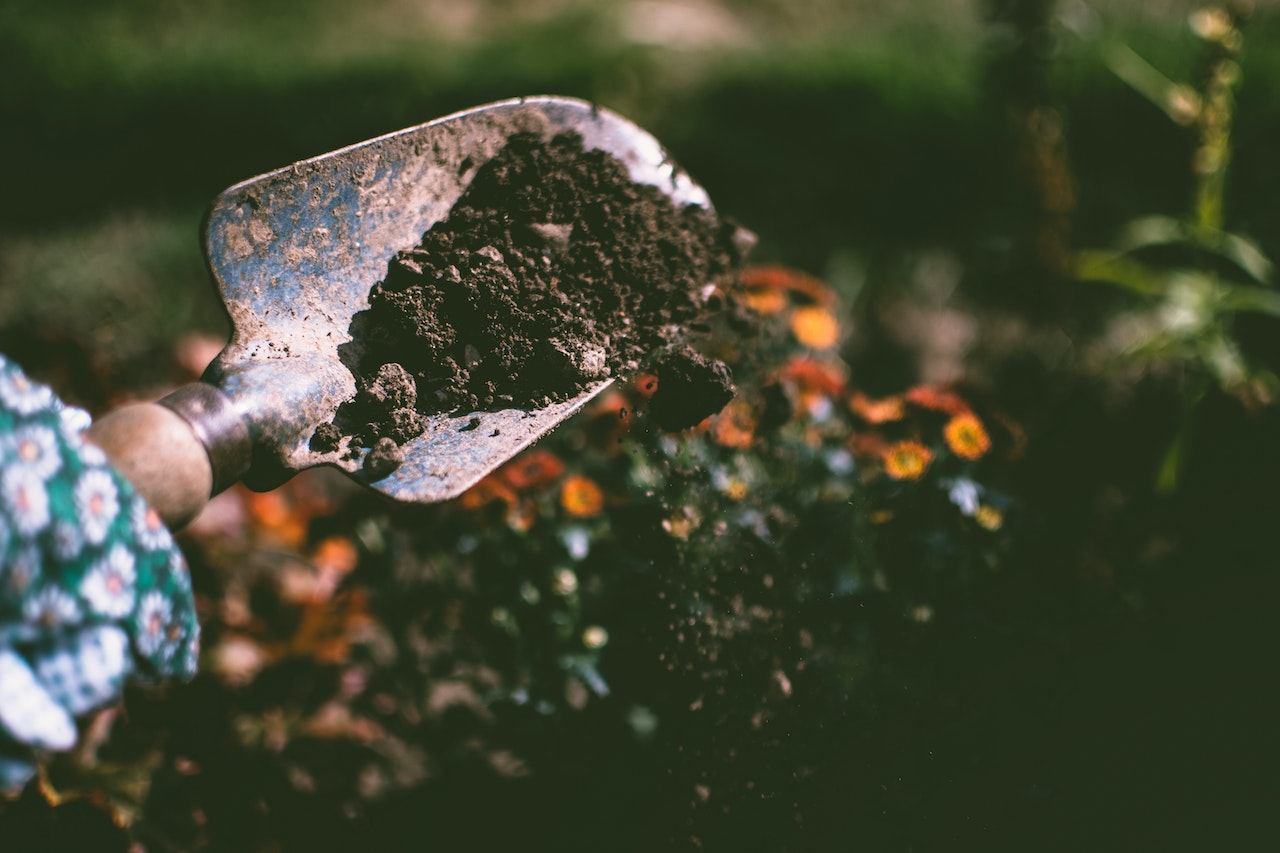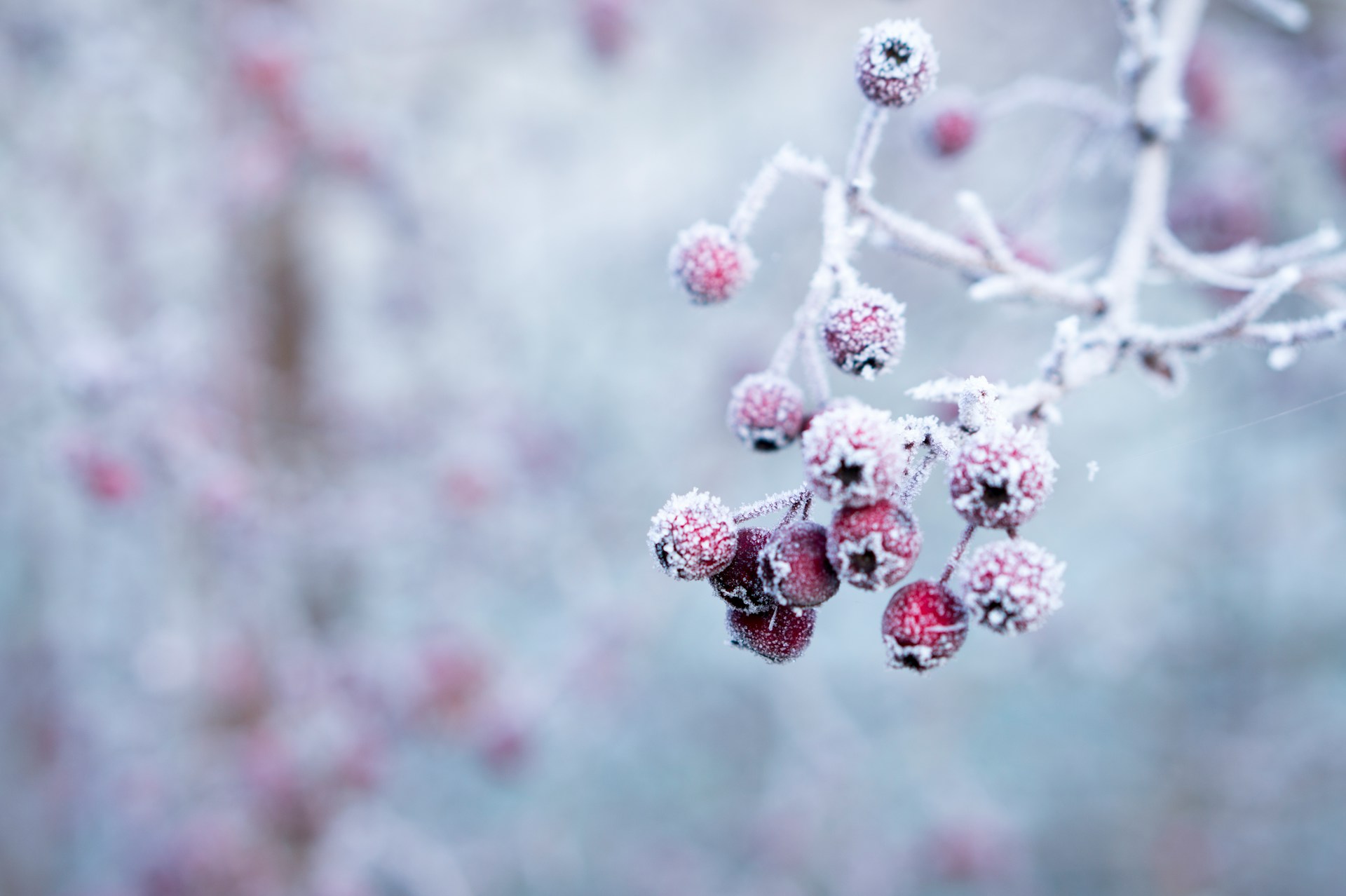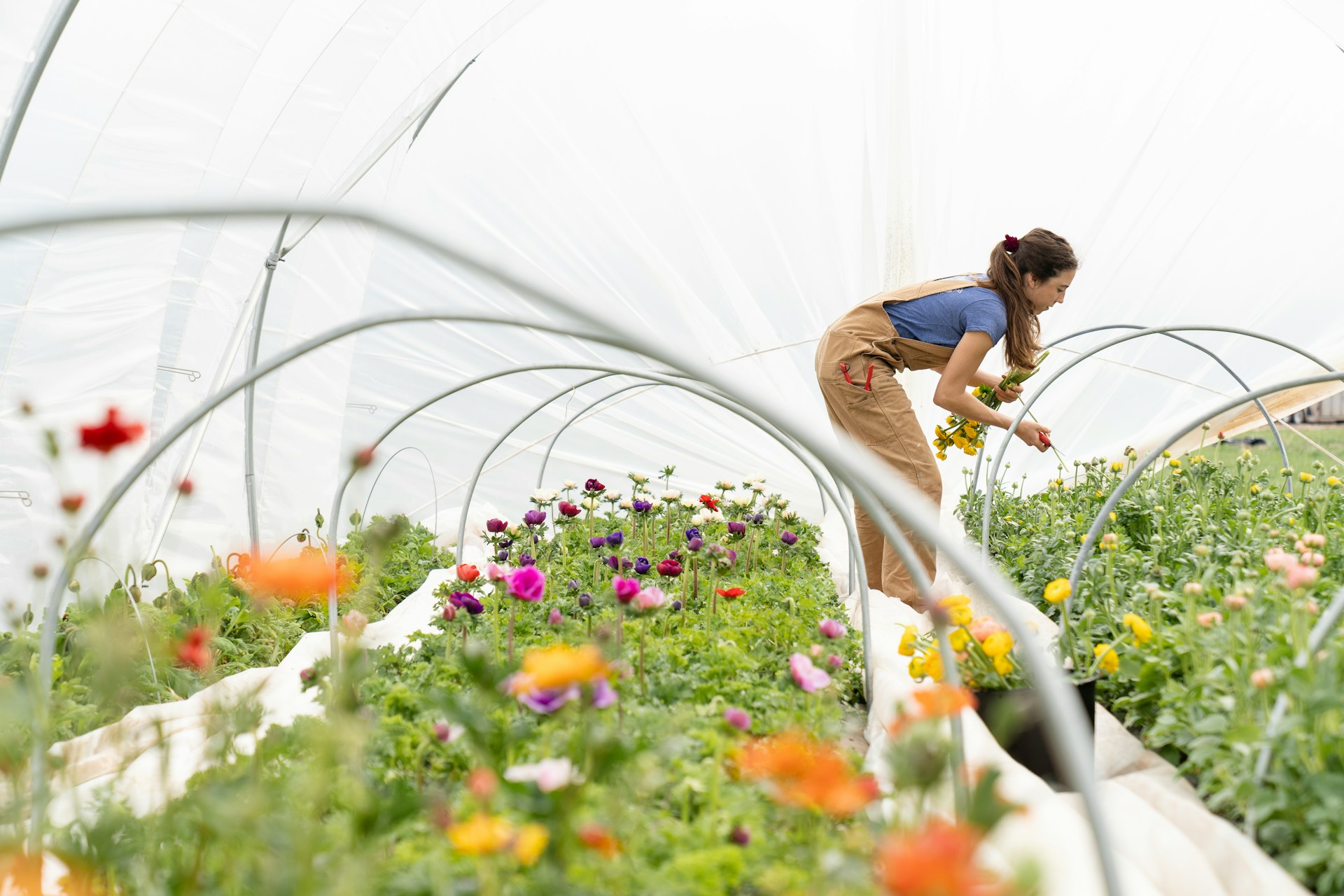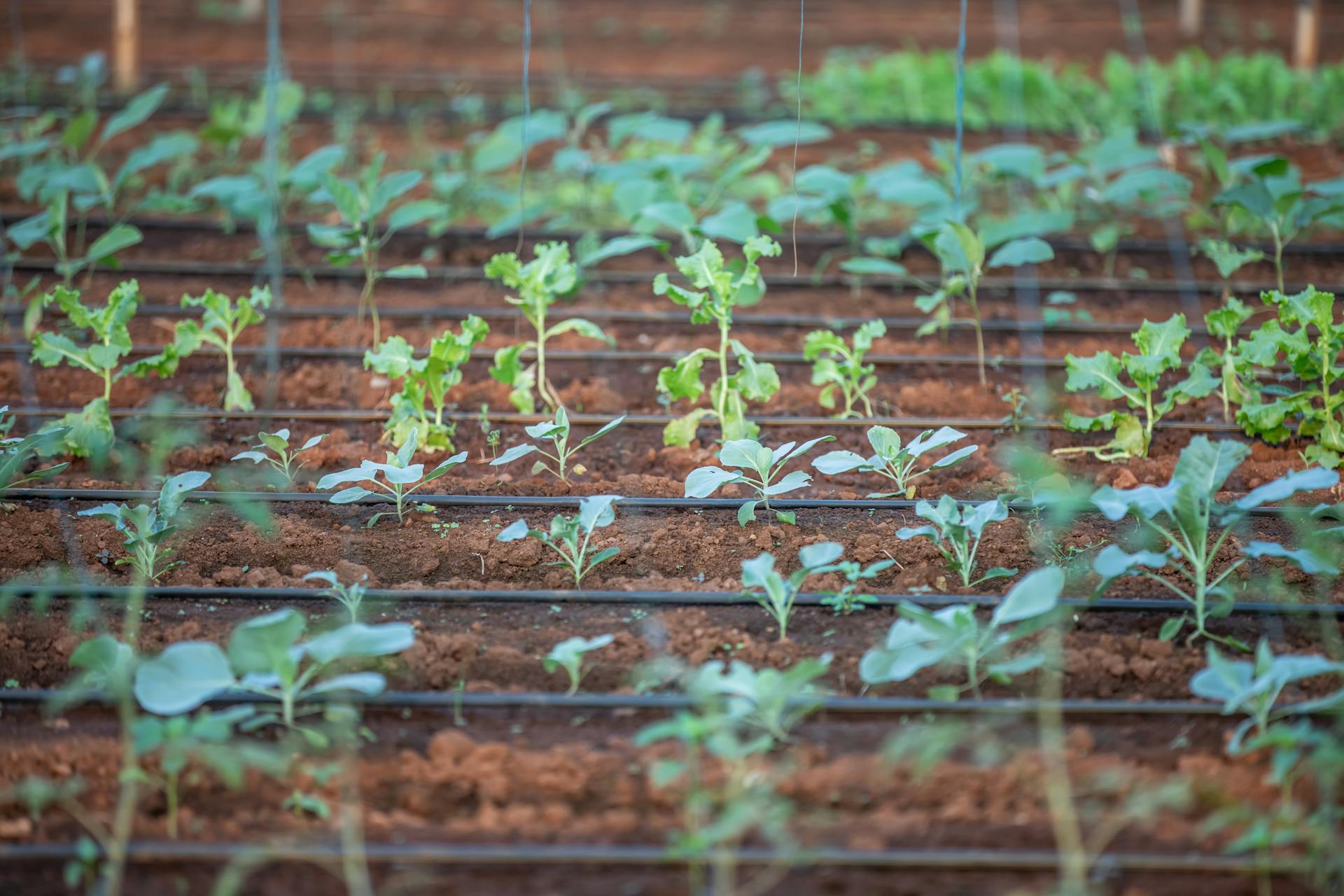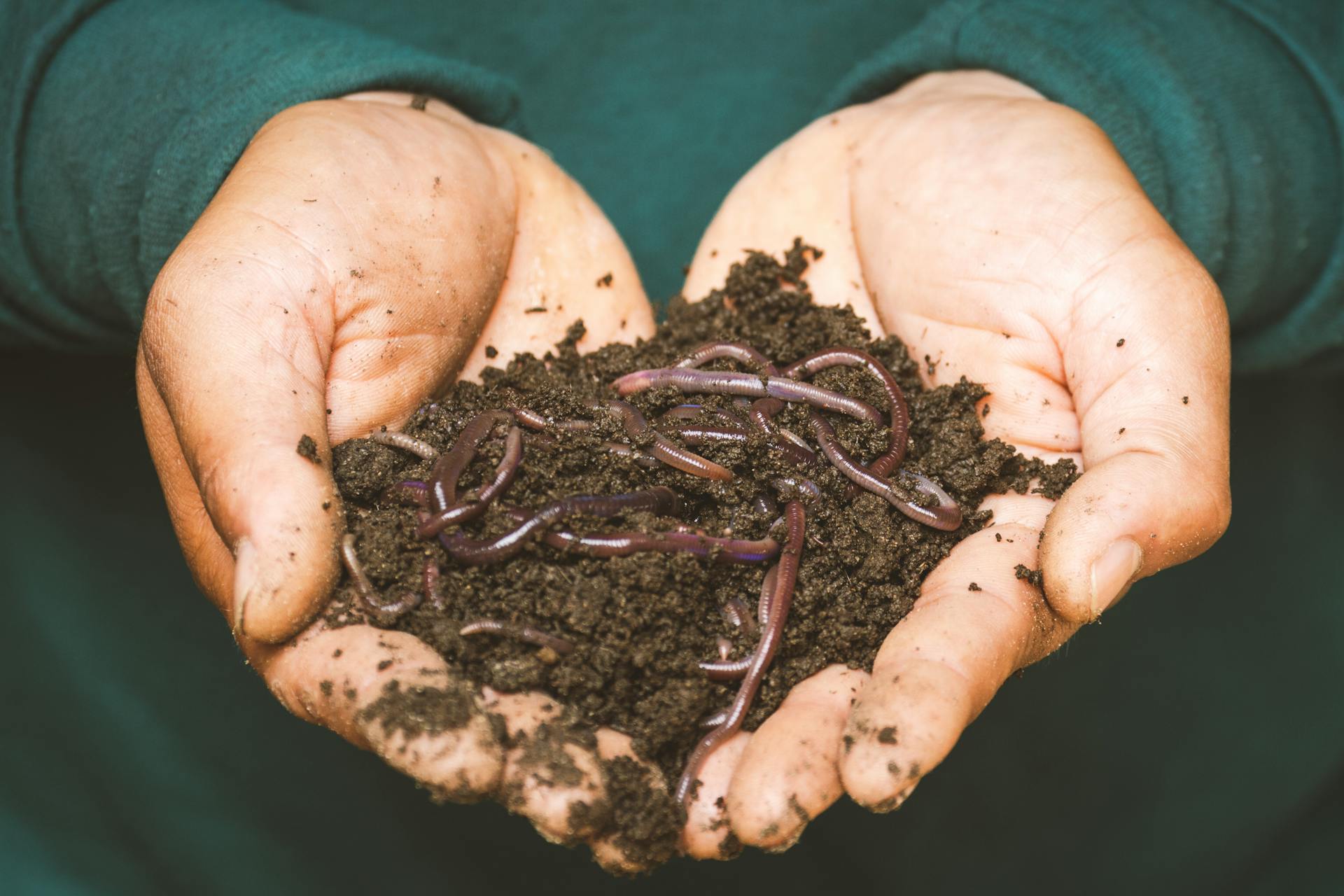One of the biggest benefits of raised garden beds is that you’re in control of the soil. With a traditional in-ground garden, you can amend the soil over time, but for the most part, you have to work with the soil you have. But even with a raised bed, it’s beneficial to use soil amendments to improve drainage and keep your plants healthy.
Because over time, even a raised garden bed’s soil can become compacted.
The good news is that with a little care and additions of soil amendments, you can maintain healthy drainage in your raised beds.
9 Soil Amendments to Improve Drainage in Your Raised Beds
There are countless soil amendments out there, but not all of them improve drainage. Here are nine of the most effective amendments for healthy, well-drained soil:
1. Perlite
One of the best soil amendments for drainage is perlite. Perlite is a granular material that’s ultra-lightweight and white in color. The weight, texture and appearance are similar to styrofoam peanuts.
Fortunately for us, perlite is not styrofoam! In fact, perlite is made from expanded volcanic glass (how cool!).
This volcanic glass is heated to 1000°C until it pops several times its original size. Exposure to such extreme heat makes perlite:
- Sterile
- Lightweight
- Long-lasting
- Easy to handle
The popping action that gives this amendment its shape and properties also makes it highly porous, so it can absorb quite a bit of water while improving drainage.
Perlite works by trapping air in the compost and making it easier for water to flow through the soil.
How Much Perlite Should You Add To Your Soil?
As a general rule of thumb, you want to aim for a ratio of 1:4 perlite to compost.
Handle with Care!
Perlite can be quite dusty, so it’s best to dampen the material with water before you start handling it. You don’t want to inhale perlite dust!
If you’re using an entire bag, fill the bag with some water, seal the bag and shake it around. Allow it to soak for at least 20 minutes before using it.
Another option is to wear a dust mask and glasses when working with this soil amendment, especially if you’re sensitive to fine particles.
2. Vermiculite
Another one of the best soil amendments for raised beds is vermiculite. Vermiculite is the name for a group of hydrated laminar minerals that look like mica.
For horticultural purposes, this material is processed with a massive amount of heat, causing it to expand into little accordion-shaped pellets.
Due to its extreme production process, vermiculite will not rot or deteriorate. Like perlite, it’s sterile and non-toxic. It’s also lightweight, so it mixes in easily with soil and other mediums.
Gardeners find that vermiculite is often the better choice for water-loving plants. Perlite can dry out very easily, which is why it’s the preferred amendment for succulents and cacti. Vermiculite, on the other hand, holds onto more water and allows plants to use that water when needed.
Vermiculite also helps aerate the soil, which further helps with drainage.
How Much Vermiculite Should You Add to Your Soil?
When building your raised beds, add about 1/3 to 1/2 vermiculite to your soil mix.
3. Compost
Organic soil amendments like compost can also help with drainage while feeding your plants. Compost is comprised of organic matter that has decomposed over time.
Some compost components will break down quickly, while others will take longer. Because these materials break down at different rates, it creates little crevices in the soil that allow air and water to permeate.
Plus, compost is rarely fully decomposed, so it serves as a feast for microorganisms. These little creatures crawl around in the soil to further improve drainage and aerate the soil.
How Much Compost Should You Add to Your Soil?
If you’re just building up your raised beds, you could add as much as 4 inches of compost to the soil. Each year, aim to add another inch of compost to the top of the soil to continue helping with drainage and feeding your soil.
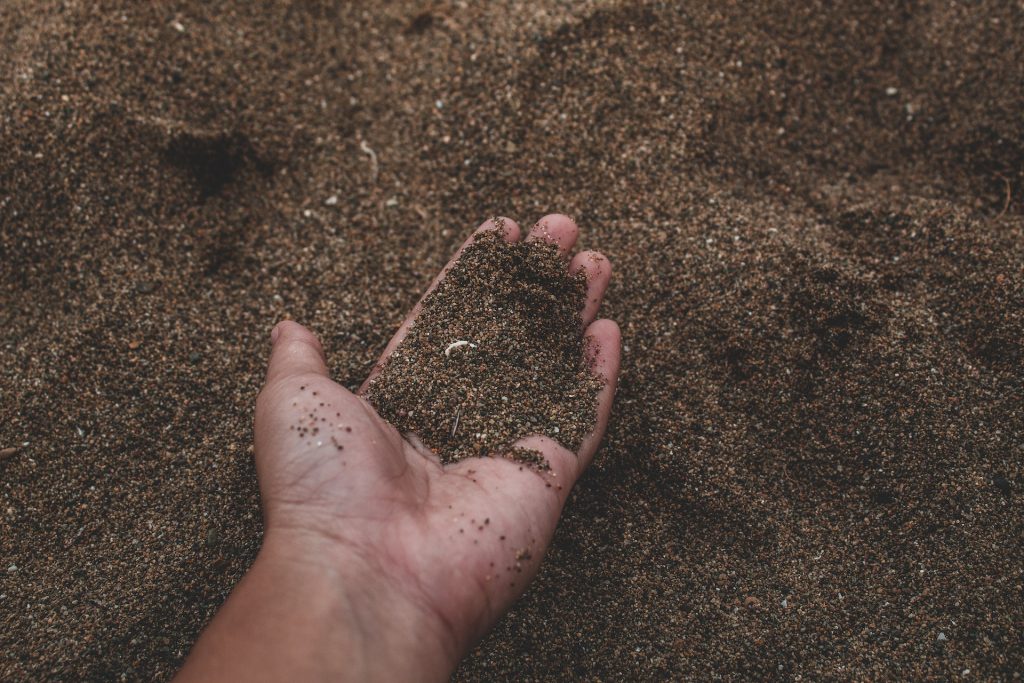
4. Greensand
Greensand is also known as glauconite, and it’s a material that comes from the ocean floor. It’s comprised of:
- Marine potash
- Iron oxide
- Silica
- Lime
- Magnesia
- Phosphoric acid
- Dozens of other trace minerals
Gardeners love greensand because it acts as a natural fertilizer, but it can also help with drainage. This soil amendment can break up heavy soils to allow oxygen and water to flow freely.
How Much Greensand Should You Add to Your Soil?
As a general rule of thumb, gardeners add 1-2 pounds of greensand per 100 square feet. But make sure that you check the manufacturer’s recommendations.
5. Peat Moss
Peat moss is a popular soil amendment because it has so much to offer. Whether you have heavy or sandy soil, peat moss can benefit your raised beds.
Peat moss can help:
- Improve the drainage of heavy soil, making it softer and fluffier
- Sandy soil retain moisture, allowing plant roots to absorb more nutrients
But what exactly is this soil amendment?
Peat moss is decomposed material from peat bogs, and it consists primarily of moss. The decomposition happens without the presence of air, so it’s a very slow process. It’s so slow, in fact, that it takes several millennia for peat moss to develop.
For this reason, peat moss is not considered a renewable resource.
As beneficial as peat moss can be, the mining of it is controversial because it releases so much carbon.
It’s also important to note that peat moss does change the pH of the soil, so if you’re going to use it as an amendment, be sure to monitor your soil’s pH levels.
How Much Peat Moss Should You Add to Your Soil?
Aim for a 2:1 ratio of soil to peat moss.
6. Mulch
Adding a layer of mulch on top of the soil promotes water retention, but did you know that it can also help with drainage?
When applied properly, mulch can:
- Improve soil structure, which helps prevent pooling
- Help with soil erosion and compaction
- Improve water absorption rate, preventing runoff water
- Deter weed growth
- Help keep the soil temperature even
Mulch also creates tiny channels that allow water to flow more easily and reach the roots of the plants.
And over time, mulch will break down to feed the soil.
How Much Mulch Should You Add to Your Soil?
How much mulch you’ll need will depend on the type that you’re using. But generally, a 2-3” layer will suffice. Anything thinner than one inch may not suppress weed growth, and anything over three inches may suffocate your plants.
7. Mushroom Substrate (a.k.a. Mushroom Compost)
Mushroom substrate, better known as mushroom compost, is a by-product of mushroom farming. It consists of organic matter and is the material that’s leftover after farmers grow mushrooms.
Mushroom compost is very effective at improving soil structure, helping reduce compaction and crusting. Improving the soil structure helps promote drainage.
Plus, there are many other benefits to using mushroom compost. It improves microbial activity and helps feed your soil.
How Much Mushroom Compost Should You Add to Your Soil?
For established raised beds, mix in about 3 inches of mushroom compost to the top layers of your soil.
8. Azomite
Azomite contains trace minerals and is mined in Utah. It acts as a natural fertilizer and is completely filler- and additive-free.
If you want to get technical, azomite is hydrated sodium calcium aluminosilicate (HSCAS). In simpler terms, it’s a special kind of rock dust that’s only found in Utah. A volcanic eruption created the ancient deposit.
Azomite contains an impressive 67 minerals, and it comes in a dirt-like form that makes it easy to work into the soil.
Its mineral-rich composition helps improve soil structure to allow for better drainage and aeration.
How Much Azomite Should You Add to Your Soil?
Aim to add about 1/4 to two pounds of azomite per ten feet, and be sure to rake it thoroughly into the soil.
9. Kelp Meal
If you’re looking for a sustainable soil amendment to improve your soil’s drainage, kelp meal is a great option.
Kelp meal is dried seaweed that’s ground into a meal-like consistency. It contains over 60 micronutrients, including nitrogen, iron, potassium, magnesium, iodine, calcium and phosphorus.
Because kelp is loaded with minerals, it helps improve the soil’s structure. The organic matter helps with aeration and drainage while also promoting healthy water retention.
How Much Kelp Meal Should You Add to Your Soil?
For new gardens, apply 1-2 pounds of kelp meal per 100 square feet. To feed plants, add 1-2 tsp per plant each month during the growing season.
Final Thoughts
Well-draining soil can help keep your plants healthy and thriving all season long. Adding these amendments to your soil in the spring or fall can help ensure that your raised beds are ready for the growing season.
